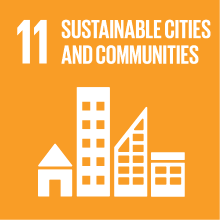ITALIAN PRE-ROMAN CIVILIZATION
- Academic year
- 2021/2022 Syllabus of previous years
- Official course title
- CIVILTA' DELL'ITALIA PRE-ROMANA
- Course code
- FM0553 (AF:353614 AR:190426)
- Teaching language
- Italian
- Modality
- On campus classes
- ECTS credits
- 6
- Degree level
- Master's Degree Programme (DM270)
- Academic Discipline
- L-ANT/06
- Period
- 2nd Semester
- Where
- VENEZIA
- Moodle
- Go to Moodle page
Contribution of the course to the overall degree programme goals
It will be analyzed relationships with etrusco-italic, Mediterranean and European cultures; we pay attention to the chronological items and to material culture.
Our main focus is to improove ability to make chronological references for archaeological evidence of etruscan art and civilisation.
Expected learning outcomes
- To know basic archaeological and technical terminology
- To Know development of settlements and cities in Venetic area
- To Know main theoretical models to analize urban societies
- To know main features of local material culture
2. Ability to apply knowledge and understanding
- To be able to employ archaeological and technical terminology
- To be able to apply theoretical models for the development of Venetic culture and landscape
- To be able to analyze to analyze settlements and cities
- To be able to analyze examples of material culture and artistic finds
3. Judgment skills
- To be able to judge and argue hypothesis about venetic contexts
4. Communication skills
- To be able to tell new finds or results of the research with a plain and technical terminology
- To be able to compare themselves with colleagues and tutor, even on.line
5. Learning ability
- To be able to take notes and to share them with colleagues, even on line
- To be able to consult bibliographic references even with a critical point of view
Pre-requirements
Contents
The following will be analyzed from this cultural and territorial context: the population, the organization of the territory, the main urban centers, the artistic manifestations and the contacts with neighboring cultures, such as the Veneti and the Golasecchiani.
Referral texts
L. Malnati, G. Sassatelli, La città e i suoi limiti in Etruria Padana, in La città murata in Etruria. Atti del 25° Convegno di studi etruschi ed italici (Chianciano Terme 2005), Pisa-Roma 2008, pp. 429-469.
E. Govi, L'Etruria padana, in Etruschi. Viaggio nelle terre dei Rasna, Milano 2019, pp. 357-362.
L. Bentini, P. von Eles, Verucchio: una comunità aristocratica tra età del Ferro e orientalizzante, in Etruschi. Viaggio nelle terre dei Rasna, Milano 2019, pp. 363-376.
P. Desantis, A. Gaucci, Spina. La città portuale nelle lagune del Delta padano e il commercio mediterraneo, in Etruschi. Viaggio nelle terre dei Rasna, Milano 2019, pp. 407-418.
R.C. De Marinis, Il Forcello di Bagnolo San Vito (Mantova), testa di ponte degli Etruschi a nord del Po, in Etruschi. Viaggio nelle terre dei Rasna, Milano 2019, pp. 438-442.
E. Govi, Marzabotto. La città fondata, in Etruschi. Viaggio nelle terre dei Rasna, Milano 2019, pp. 443-451.
G. Sassatelli, Bologna Etrusca: le origini e la formazione. La fase villanoviana e l'orientalizzante, in Storia di Bologna, Bologna 2005, pp. 159-156.
L. Bentini, Il deposito di San Francesco, in Storia di Bologna, Bologna 2005, pp. 194-199.
G. Sassatelli, La fase felsinea, Storia di Bologna, Bologna 2005, pp. 235-258
E. Govi, Le necropoli. La struttura sociale e politica, in Storia di Bologna, Bologna 2005, pp. 264-289.
C. Balista, M. Gamba, Le città dei Veneti antichi, in Venetkens, catalogo della mostra, Venezia 2013, pp. 67-78.
R.C. de Marinis, M. Rapi (a cura di) 2007, L’abitato etrusco del Forcello di Bagnolo San Vito (Mantova). Le fasi arcaiche, Firenze.
T. Quirino “012, Forcello di Bagnolo San Vito (MN) dalle strutture abitative alla forma urbana. Alcune riflessioni sull’architettura etrusca della Pianura Padana, in Padusa 48, pp. 89-107.
C. Reusser (a cura di) 2017, Spina. Neue perspektiven der archäologischen Erforschung. Nuove prospettive della ricerca archeologica, Giornata di studi all’Università di Zurigo, Zürich 2012, Zürcher Archäologische Forschungen 4. (in particolare i contributi di L. Cappuccini e M. Mohr; L. Zamboni su Spina; S. Bonomi, G. Gambacurta su Adria; S. Romagnoli sulla necropoli di Valle Trebba a Spina)
For non attending students any paper on your own choice from the books:
Etruschi. Viaggio nelle terre dei Rasna, catalogo della Mostra, Milano 2019.
Venetkens. Viaggio nella terra dei Veneti antichi, Venezia, 2013.
Assessment methods
Type of exam
Teaching methods
Lectures and exercises
On.line papers for specific topics.
2030 Agenda for Sustainable Development Goals
This subject deals with topics related to the macro-area "Cities, infrastructure and social capital" and contributes to the achievement of one or more goals of U. N. Agenda for Sustainable Development


